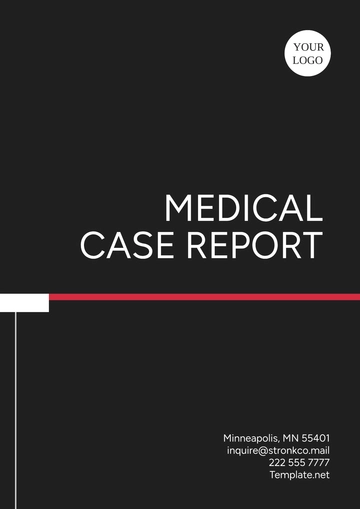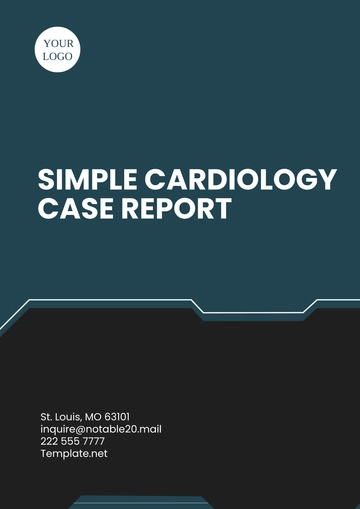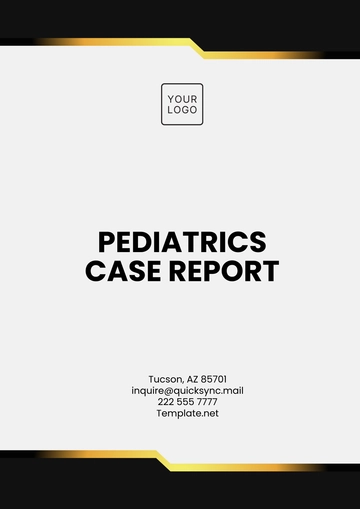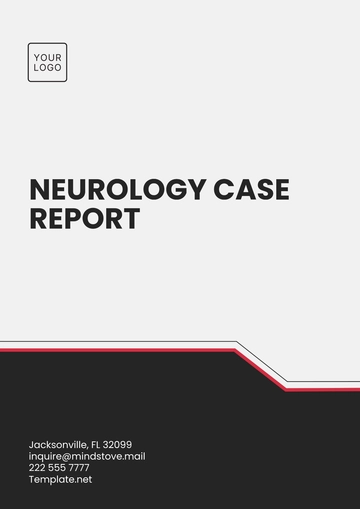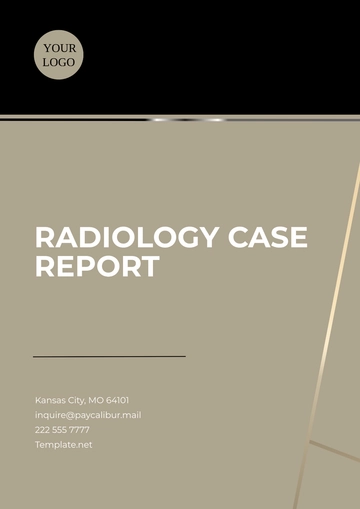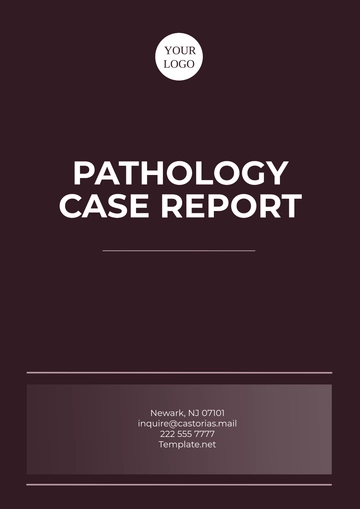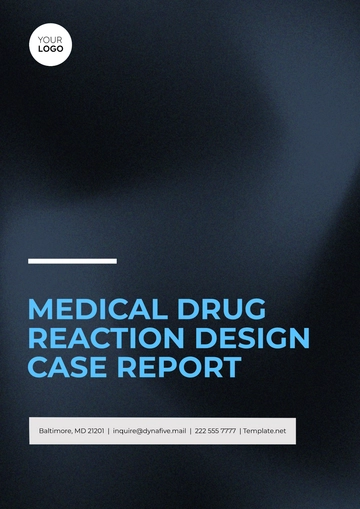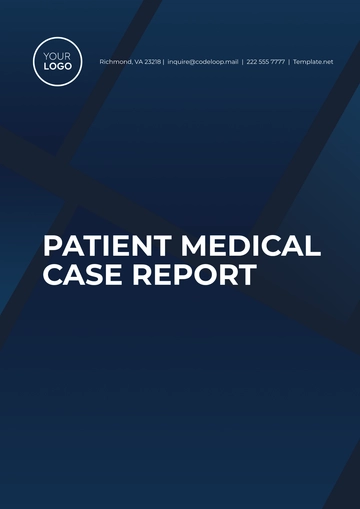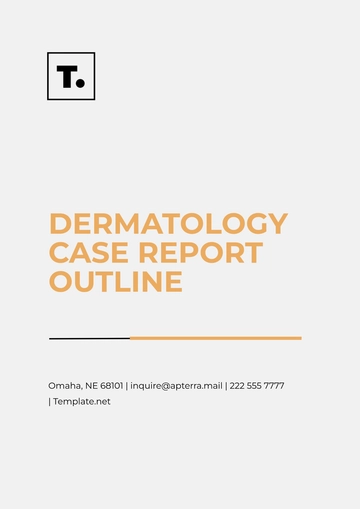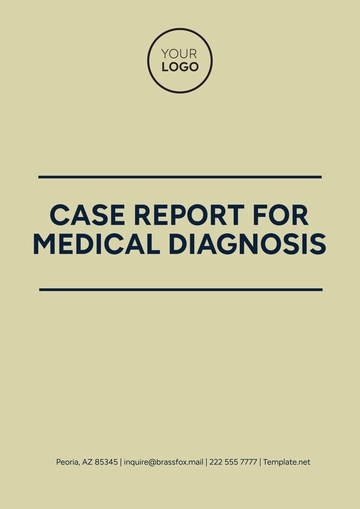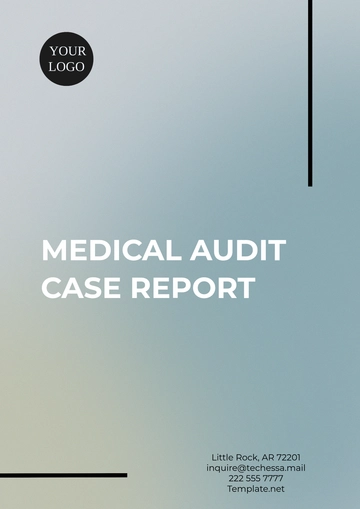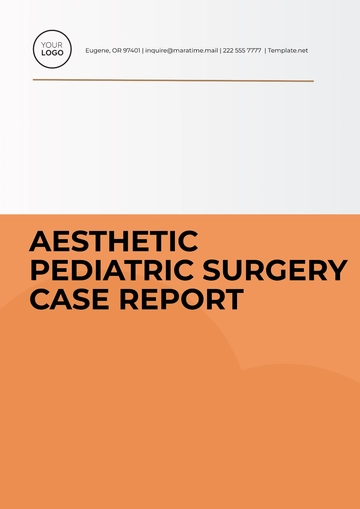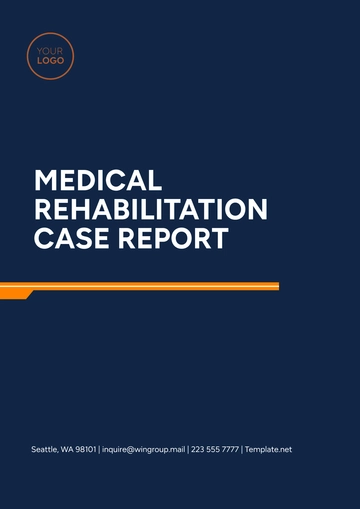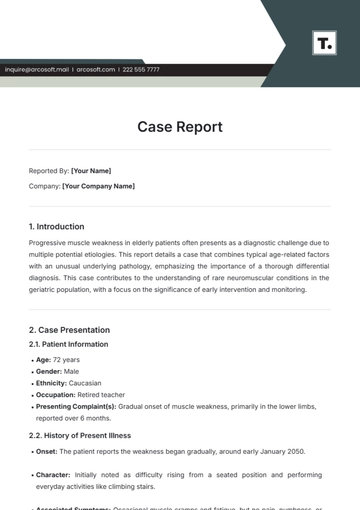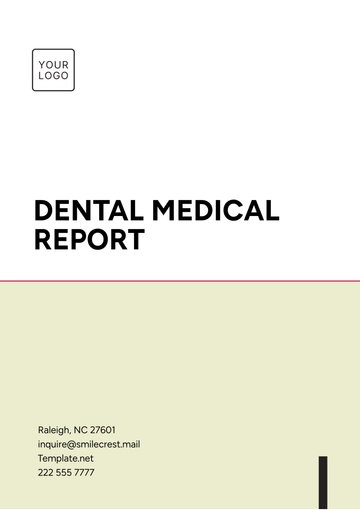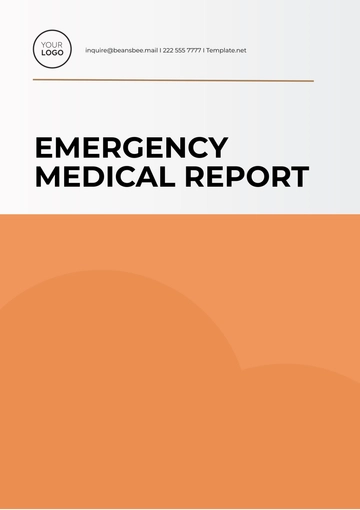Free Medical Student Case Report
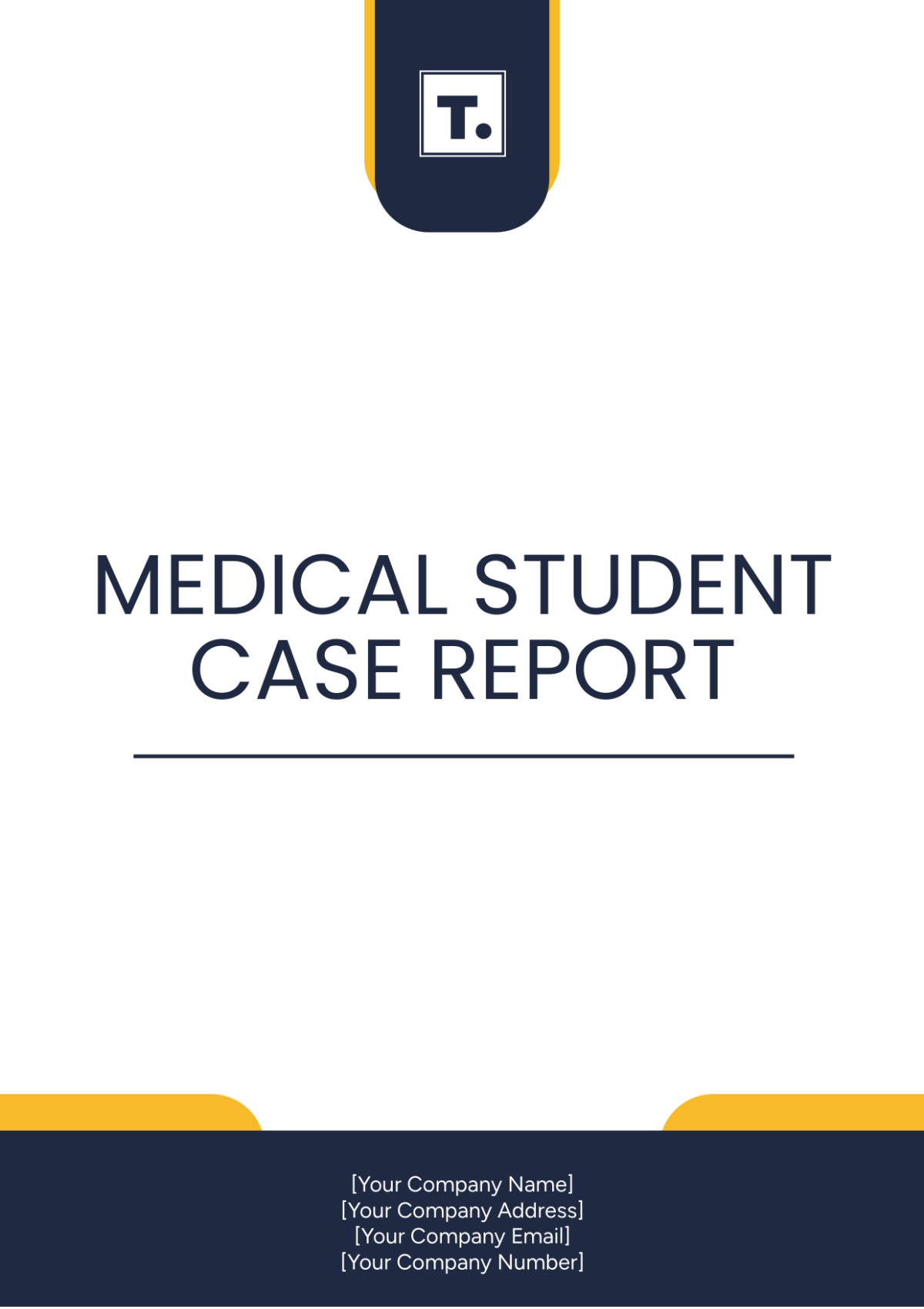
Prepared by: [Your Name]
I. Introduction
A. Background
This case report documents a rare congenital cardiac anomaly observed in an 8-year-old female patient under our care at St. Luke's Children's Hospital. Congenital heart defects, though common, often present with varied clinical manifestations, making each case a unique learning opportunity for medical students.
B. Significance
Understanding such anomalies is crucial not only for clinical management but also for advancing our knowledge in pediatric cardiology. This report aims to elucidate the diagnostic challenges and treatment decisions involved in managing this particular case of Tetralogy of Fallot (TOF).
C. Educational Objectives
The primary objective is to explore the clinical presentation, diagnostic workup, therapeutic interventions, and outcomes of TOF in a pediatric patient. By analyzing this case, medical students gain insights into effective patient management and the complexities of congenital heart disease.
II. Case Presentation
Patient Information | |
|---|---|
Age: | 8 years |
Gender: | Female |
Chief Complaint: | Cyanosis |
History: | Asymptomatic until recently |
Physical Exam: | Central cyanosis |
Diagnostic Tests: | Echocardiography, Chest X-ray |
Diagnosis: | Tetralogy of Fallot (TOF) |
III. Discussion
Differential Diagnoses Considered | Rationale for Diagnosis |
|---|---|
Pulmonary hypertension | Normal pulmonary artery pressures ruled out, focusing on intracardiac defects |
Eisenmenger syndrome | Systemic desaturation is not evident, distinguishing from advanced TOF |
Pulmonary valve stenosis | Severe cyanosis and right ventricular hypertrophy characteristic of TOF |
Treatment Approach | Outcome and Follow-Up |
|---|---|
Surgical repair of TOF | Successful correction of intracardiac defects |
Post-operative care and monitoring | Immediate improvement in oxygen saturation post-surgery |
Long-term cardiology follow-up | Regular follow-up to monitor for residual defects and complications |
Counseling for parents and patient | Guidance on managing post-surgical care and lifestyle adjustments |
IV. Conclusion
A. Summary
This case underscores the critical importance of early diagnosis and tailored surgical intervention in managing congenital heart anomalies like the Tetralogy of Fallot. Prompt recognition and multidisciplinary management are pivotal for improving patient outcomes.
B. Clinical Implications
Identifying atypical presentations of congenital heart defects ensures timely intervention, reducing morbidity and mortality in pediatric patients.
C. Educational Value
Case reports such as this enrich medical education by highlighting diagnostic challenges, treatment strategies, and patient outcomes, fostering a deeper understanding of pediatric cardiology among medical students.
V. Recommendation
A. Further Research
Encourage further investigation into long-term outcomes following surgical repair of TOF in pediatric populations to optimize treatment protocols and enhance patient care.
B. Clinical Practice
Promote comprehensive cardiovascular assessments in pediatric patients presenting with cyanotic symptoms to expedite diagnosis and treatment initiation.
C. Medical Education
Integrate case-based learning into pediatric cardiology training curricula to cultivate clinical reasoning skills and enhance decision-making abilities among medical students.
- 100% Customizable, free editor
- Access 1 Million+ Templates, photo’s & graphics
- Download or share as a template
- Click and replace photos, graphics, text, backgrounds
- Resize, crop, AI write & more
- Access advanced editor
Discover the ultimate tool for medical students with the Medical Student Case Report Template from Template.net. This editable and customizable template streamlines your case report process, ensuring precision and clarity. Crafted to be easily editable in our AI Editor Tool, it empowers you to showcase your findings with professionalism and ease. Perfect for presenting comprehensive medical cases effortlessly.
You may also like
- Sales Report
- Daily Report
- Project Report
- Business Report
- Weekly Report
- Incident Report
- Annual Report
- Report Layout
- Report Design
- Progress Report
- Marketing Report
- Company Report
- Monthly Report
- Audit Report
- Status Report
- School Report
- Reports Hr
- Management Report
- Project Status Report
- Handover Report
- Health And Safety Report
- Restaurant Report
- Construction Report
- Research Report
- Evaluation Report
- Investigation Report
- Employee Report
- Advertising Report
- Weekly Status Report
- Project Management Report
- Finance Report
- Service Report
- Technical Report
- Meeting Report
- Quarterly Report
- Inspection Report
- Medical Report
- Test Report
- Summary Report
- Inventory Report
- Valuation Report
- Operations Report
- Payroll Report
- Training Report
- Job Report
- Case Report
- Performance Report
- Board Report
- Internal Audit Report
- Student Report
- Monthly Management Report
- Small Business Report
- Accident Report
- Call Center Report
- Activity Report
- IT and Software Report
- Internship Report
- Visit Report
- Product Report
- Book Report
- Property Report
- Recruitment Report
- University Report
- Event Report
- SEO Report
- Conference Report
- Narrative Report
- Nursing Home Report
- Preschool Report
- Call Report
- Customer Report
- Employee Incident Report
- Accomplishment Report
- Social Media Report
- Work From Home Report
- Security Report
- Damage Report
- Quality Report
- Internal Report
- Nurse Report
- Real Estate Report
- Hotel Report
- Equipment Report
- Credit Report
- Field Report
- Non Profit Report
- Maintenance Report
- News Report
- Survey Report
- Executive Report
- Law Firm Report
- Advertising Agency Report
- Interior Design Report
- Travel Agency Report
- Stock Report
- Salon Report
- Bug Report
- Workplace Report
- Action Report
- Investor Report
- Cleaning Services Report
- Consulting Report
- Freelancer Report
- Site Visit Report
- Trip Report
- Classroom Observation Report
- Vehicle Report
- Final Report
- Software Report
